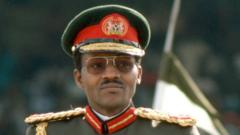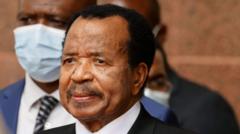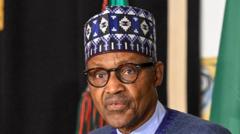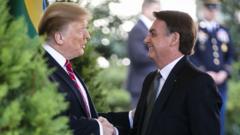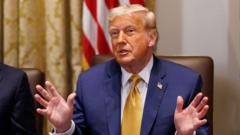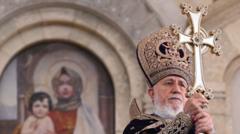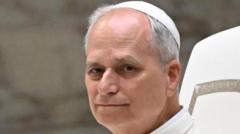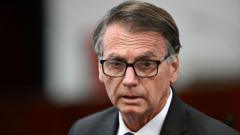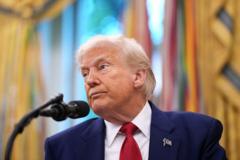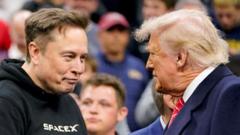The world waits in breathless anticipation as the cardinals gathered for the conclave are unable to select a new pope after two days of voting, marked by black smoke from the Sistine Chapel indicating no agreements reached.
**No New Pope Yet: Black Smoke Signals Continued Vatican Conclave Tension**

**No New Pope Yet: Black Smoke Signals Continued Vatican Conclave Tension**
Despite morning voting in the Vatican conclave, cardinals have yet to elect a new pope, with black smoke signaling another inconclusive ballot and a future of uncertainty ahead.
The historic conclave in Vatican City continues to captivate both faith leaders and the public as it enters its third day without a candidate for the papacy. On Thursday morning, black smoke billowed from the chimney atop the Sistine Chapel, signifying that the 133 voting cardinals were still unable to reach a consensus. Following the passing of Pope Francis last month, the conclave marks the first papal election in over a decade.
The public watched with bated breath in St. Peter's Square after the cardinals cast their votes in private, only to be met with the disappointing sight of black smoke. The cardinals, shielded from outside communication and distractions, were expected to continue deliberating with two more voting sessions planned for the afternoon. The process, steeped in secrecy, aims to facilitate a thorough voting procedure, where each cardinal writes down their chosen candidate before the ballots are burned.
The waiting has become a significant aspect of the conclave, especially after an initial vote on Wednesday evening resulted in three hours of deliberation and no outcome. Many gathered in the square believed the delays were due to the diverse and unfamiliar makeup of the cardinals, with many appointed by Francis himself. The shifting dynamics of the cardinals' political landscape, marked by progressive and conservative factions, adds yet another layer of complexity to the selection process.
As the world watches, each round of voting brings hopes for "white smoke," indicating the election of a new pope. However, the uncertainty surrounding this conclave highlights deep divisions within the Church, reflecting broader ideological struggles within Catholicism. The conclave is expected to continue daily voting until a candidate secures a two-thirds majority, with no definitive timeline in place. Cardinal Timothy Dolan of New York hinted at a potentially longer conclave, suggesting that the complexity of the current electoral climate might lead to extended discussions.
With a rich history, papal elections have seen varying timelines—some lasting mere days while others stretched into months. This conclave's unique nature and the ongoing debates signal that while the desire for unity is prevalent, divergent views on the Church's future may still impede swift decision-making.
Observers continue to anticipate the next round of pivotal voting, as hopes for a new pontiff remain. The crowds linger, their faith and curiosity entwined, reflecting on the possible paths the Church may take under a new leader once the long-anticipated white smoke appears.
The public watched with bated breath in St. Peter's Square after the cardinals cast their votes in private, only to be met with the disappointing sight of black smoke. The cardinals, shielded from outside communication and distractions, were expected to continue deliberating with two more voting sessions planned for the afternoon. The process, steeped in secrecy, aims to facilitate a thorough voting procedure, where each cardinal writes down their chosen candidate before the ballots are burned.
The waiting has become a significant aspect of the conclave, especially after an initial vote on Wednesday evening resulted in three hours of deliberation and no outcome. Many gathered in the square believed the delays were due to the diverse and unfamiliar makeup of the cardinals, with many appointed by Francis himself. The shifting dynamics of the cardinals' political landscape, marked by progressive and conservative factions, adds yet another layer of complexity to the selection process.
As the world watches, each round of voting brings hopes for "white smoke," indicating the election of a new pope. However, the uncertainty surrounding this conclave highlights deep divisions within the Church, reflecting broader ideological struggles within Catholicism. The conclave is expected to continue daily voting until a candidate secures a two-thirds majority, with no definitive timeline in place. Cardinal Timothy Dolan of New York hinted at a potentially longer conclave, suggesting that the complexity of the current electoral climate might lead to extended discussions.
With a rich history, papal elections have seen varying timelines—some lasting mere days while others stretched into months. This conclave's unique nature and the ongoing debates signal that while the desire for unity is prevalent, divergent views on the Church's future may still impede swift decision-making.
Observers continue to anticipate the next round of pivotal voting, as hopes for a new pontiff remain. The crowds linger, their faith and curiosity entwined, reflecting on the possible paths the Church may take under a new leader once the long-anticipated white smoke appears.


